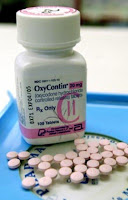A new drug test: SEWAGE

Researchers studying illegal drug-use patterns in communities throughout Oregon have turned to a new source for their raw data – raw sewage.
A one-day study of wastewater entering 96 city treatment centers, including those in Gresham and Sandy, revealed that each city’s wastewater contained measurable levels of methamphetamine.
Eighty percent contained cocaine and less than half showed measurable levels of ecstasy.
Statewide, the data showed higher cocaine and ecstasy use in urban areas, but methamphetamine use was present in rural and urban communities.
The study is a like a drug test for an entire community. Only instead of individuals aiming for a cup, they simply do their business on the proverbial bowl and flush.
After all, what comes in, even illegal drugs, must come out.
With that in mind, researchers from Oregon State University, Washington State University and McGill University in Montréal, Quebec, asked 130 cities across the state to voluntarily submit untreated samples from their wastewater facilities on March 4, 2008, in an effort to track illegal drug use in cities of all sizes, both urban and rural.
Nearly 75 percent of the cities, or 96 municipalities representing 65 percent of the state’s population, took part – a high turnout that surprised Jennifer Fields, chemist and professor of environmental chemistry at Oregon State University.
She attributes it to the fact that wastewater treatment plants routinely take samples to comply with permits and environmental requirements, so taking an extra one wasn’t a burden, Fields said.
In Gresham, a machine (boy, did someone dodge a bullet) collected samples every hour, said Paul Eckley, manager of the city’s wastewater services division.
Researchers then calculated the presence of three stimulant drugs – methamphetamine, cocaine and ecstasy – which they measured, and we are not making this terminology up, as index loads.
Results were published last week in the journal Addiction.
Fields cautioned that the results are not to be used to rank communities in terms of drug use. As a press release for the study explains, samples for just one day are “inadequate as a complete measure of drug excretion for a community or entire state.”
Instead, researchers divided the results for each city into thirds, creating upper, middle and lower ranges.
Gresham was one of five cities to land in the upper range for all three drugs; however, Gresham’s wastewater treatment plant also treats sewage from Fairview and Wood Village. Troutdale didn’t take part in the study.
Other cities that scored in the high upper range for all three substances include Portland, Eugene/Springfield, Grand Ronde and Rockaway Beach.
Health officials could use this simple and cost-effective “methodology” as a proactive tool for drug education, treatment and prevention efforts, Fields said.
Source : www.theoutlookonline.com














Post a Comment